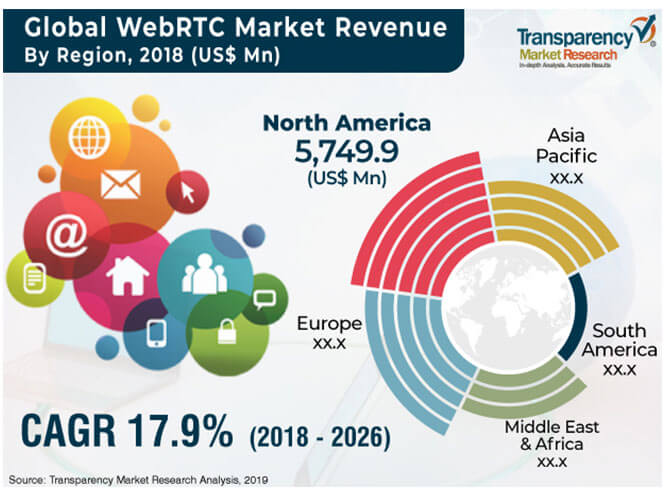
Technologies Enabling Remote Work and Collaboration-WebRTC
We've seen the world adapting to "Work From Home" or "Remote Work" in the last ten months since the start of the pandemic. Video/web conferencing has become part of the daily routine for over 60% of the US workers, and collaboration products like Cisco Webex, Zoom, Microsoft Teams, Slack, Google Meetings have become consumer brands.
It's good to take a moment and investigate the technological underpinnings of many of these technologies. While WebRTC is not the only underlying technology, the development of this open standard has been instrumental in bringing video and voice to the browser.
History of WebRTC
On Jan 26, 2021, the World Wide Web Consortium (W3C) and the Internet Engineering Task Force (IETF) announced that Web Real-Time Communications (WebRTC), which powers myriad services, is now an official standard, bringing audio and video communications anywhere on the Web. WebRTC, comprised of a JavaScript API for Web Real-Time Communications and a suite of communications protocols, allows any connected device, on any network, to be a potential communication end-point, on the Web. WebRTC already serves as a cornerstone of online communication and collaboration services.
https://www.w3.org/2021/01/pressrelease-webrtc-rec.html.en
Most people think of WebRTC as going back to 2011 when Google open-sourced WebRTC source code. But this was a result of Google acquiring Global IP Solutions (or GIPS), a company founded around 1999 in Sweden.
 Image credit - Carl Blume
Image credit - Carl Blume
Market Potential for WebRTC
Today, WebRTC continues to grow with almost every #CPaaS provider building on it. “WebRTC will continue to dominate in the CPaaS market, even though many seldom refer directly to the technology itself. But the analysts who continue to study the huge potential of this technology continue to predict growth as the biggest players, including AT&T, Ribbon, Kandy, Alcatel-Lucent, Apple, Google, Cisco, Microsoft, Oracle, and of course Twilio continue to invest heavily.” David Walsh, Chairman/CEO, Ribbon Communications. (Juhi Fadia, http://www.tmcnet.com/voip/news/articles/443891-webrtc-approaches-its-second-decade-what-does-2020.htm)

According to a market research report published by Transparency Market Research titled ‘WebRTC Market (Platform Provider: Browser, Mobile, Unified Communication; Solution: Voice, Video, and Data Sharing; End-use Industry: Telecommunications, IT, Health Care, E-commerce, Education, Media & Entertainment, BFSI, and Others (Energy and Transportation)) – Global Industry Analysis, Size, Share, Growth, Trends, and Forecast, 2018 - 2026,’ the global WebRTC market is expected to reach US$ 54,944.9 Mn by 2026. The market is anticipated to expand at a CAGR of 17.9% during the period from 2018 to 2026. The global demand for WebRTC is expected to rise, largely due to a rise in its application in end-use sectors such as telecom, IT, e-commerce, and others.
WebRTC Trends in 2021 and Beyond
2020 was a disruptive year that established the primacy of collaboration through video conferencing as the default office/work experience most knowledge workers will have. Even post-pandemic, things are unlikely to go back to the previous normal of the majority of workers working or cohabitated in a physical office facility. Increased use of collaboration tools will force developers to pay attention to the following trends:
Increased audience sizes for meetings:
While traditional meetings can be well addressed with the current state of the art, Zoom is already pushing the envelope with 49 people viewable in the gallery view. Increasingly, as more events move online – conferences, meetings of government agencies, etc., WebRTC will have to address seamlessly scaling and optimizing for larger meeting sizes.
Background blurring, virtual backgrounds, noise cancellation, filters:
You thought these were concepts in the consumer realm! But with everyone working from homes, these have become important productivity tools. Expect the WebRTC community to address these going forward.
User privacy and security:
Zoom suffered major PR headaches in the early days of the pandemic, with “ZoomBombing” becoming a word in the English dictionary! Privacy and security will need to be increasingly baked into WebRTC than being addressed as integrations and afterthoughts.
Improved video quality and newer Codecs:
4K video is theoretically possible today, but adoption of new codecs (HEVC, VVC) will make it more viable.
Eventually, all these will lead to an abundance of applications inherently capable of live video and audio – giving a new boost to how people work, learn, collaborate, entertain, play, participate in civic duties, etc.
WebRTC Development Platforms and Toolkits.
As WebRTC based development has gained ground over the last ten years, the development community has seen a lot of expansion of choices to build these applications. Toolkits significantly accelerate time to market for product developers and assure certain standardization and reliability. In terms of commercial models, they range from open source to SaaS (pay by the drink) model. Google’s open-source WebRTC stack is a great first place to start – it makes it easier to write your own downloadable client that will interoperate with most browsers.
Some of the other more popular ones are:
-
OWT – Open WebRTC Toolkit from Intel
https://01.org/open-webrtc-toolkit -
WebRTC Calling API from Bandwidth
https://www.bandwidth.com/voice/webrtc/ -
Tokbox / Vonage Video API
https://tokbox.com/ -
Twilio Video SDK’s
https://www.twilio.com/video -
The Agora Platform
Agora.io -
Sinch
Sinch.com -
VSee
Vsee.com -
Liveswitch
Liveswitch -
Softil
Softil.com
At Intelliswift, our Digital Product Engineering team has been working with both product developers and with end-user enterprises to harness and bring the power of seamless video collaboration to a range of use cases – from customer service to employee engagement, telehealth to virtual classrooms, to learning and training, product demonstrations and office collaboration. With WebRTC becoming a standard one hopes to see even broader incorporation of the technology into everyday business and consumer apps, and more interoperability. We’re looking forward to collaborating with others in the WebRTC community to drive adoption and deliver best-in-class solutions.

